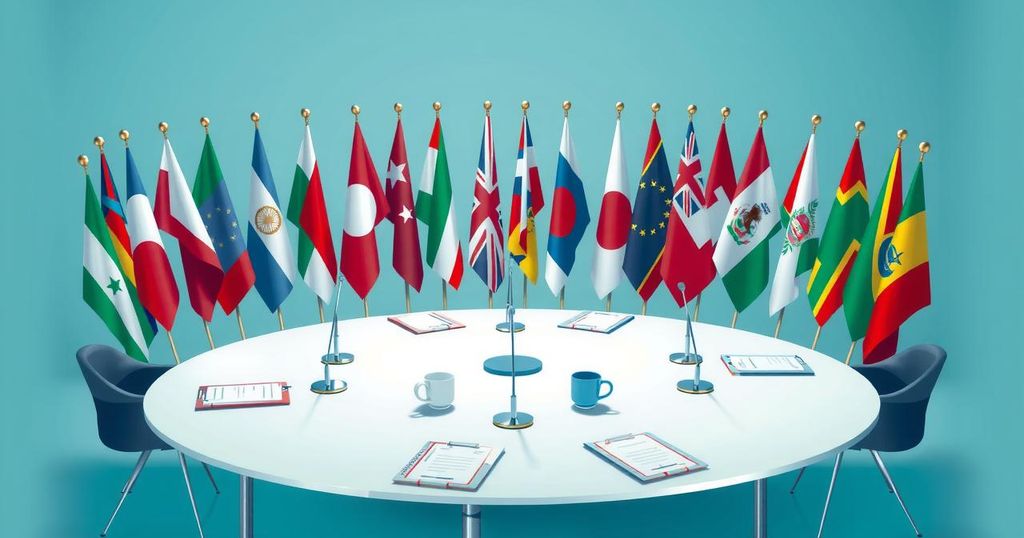Ukraine-Russia Ceasefire Talks: Key Issues and Developments in Saudi Arabia

Ukraine and Russia engage in ceasefire discussions in Saudi Arabia, initiated by U.S. President Trump, aiming for a truce by Easter. Central topics include a 30-day ceasefire on energy attacks, Black Sea shipping safety, and the acknowledgment of Russian territorial claims. Negotiations face challenges amidst ongoing hostilities and skepticism from both sides regarding effective resolutions.
Officials from Ukraine and Russia are participating in ceasefire discussions in Saudi Arabia, prompted by U.S. President Donald Trump’s desire to achieve a truce ahead of Easter. The delegations have begun informal talks, marking the first parallel discussions since Russia’s full-scale invasion. Trump aims for a ceasefire deal by April 20, coinciding with both Western and Orthodox Easter celebrations.
However, Kremlin spokesperson Dmitry Peskov expressed skepticism about rapid progress in negotiations, stating that efforts are just beginning and will likely be challenging. As tensions remain high, the discussions come after fatal drone strikes by Russia in Kyiv, reinforcing the precarious security situation in Ukraine.
Among the key issues to be addressed is a proposed 30-day ceasefire on energy facility attacks, which is intended to culminate in a longer-term peace accord. Following discussions between Trump and Putin, both leaders acknowledged the initiation of peace efforts with a temporary pause intended to protect energy infrastructure.
Ukraine’s President Zelensky has indicated a willingness to outline specific facilities eligible for a ceasefire, yet concerns persist that such a pause may favor Moscow, given Ukraine’s reliance on striking Russian oil facilities to exert pressure.
Another focal point of the talks is the UN-brokered Black Sea shipping agreement, previously invalidated by Russia’s withdrawal. Moscow appears amenable to renewing discussions regarding safe navigation for commercial ships in the region, indicating a possible shift towards cooperation.
Central to the negotiations is the acknowledgment of Russian claims over certain disputed territories in Ukraine, a matter that may prove contentious. Ukraine asserts its inability to reclaim these areas through military force and insists on diplomatic resolution, rejecting the notion of recognizing Russian sovereignty.
Discussions may also touch upon NATO membership and security guarantees for Ukraine, with indications that any potential cession of territory could be contingent upon such assurances. However, skepticism exists regarding the feasibility of NATO membership under current circumstances.
Additionally, the issue of U.S. access to Ukraine’s mineral and energy resources remains a point of contention. Discussions have suggested that U.S. investment in these sectors could deter future aggression from Russia.
Recent developments include a significant prisoner exchange between the two nations, which showcased a rare moment of goodwill amidst ongoing hostilities. Furthermore, Putin has voiced desires for the easing of Western sanctions on Russia and the resumption of presidential elections in Ukraine, raising concerns about the viability of such proposals under wartime conditions.
In summary, the U.S.-led ceasefire talks in Saudi Arabia represent a critical juncture in the ongoing conflict between Ukraine and Russia. Key areas for discussion include a temporary ceasefire on energy facilities, improvements in Black Sea shipping safety, the acknowledgment of disputed territories, and potential security guarantees for Ukraine. Despite the complexity of the negotiations and the geopolitical stakes involved, the outcomes could significantly shape the future of peace in the region.
Original Source: www.independent.co.uk








